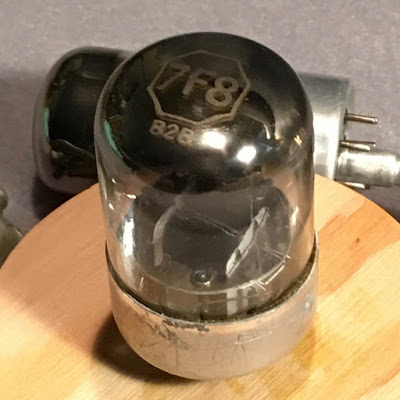I'll start the new decade with scanned negatives of my DIY Audio projects from the mid to late 90s. Most of these pictures were taken either with my Pentax K1000 or Leica M3 + Rigid 50mm Summicron, loaded with either Agfa Vista or Kodak Plus X, processed by a local lab. I didn't know how to develop film yet back then. 😉
ca. '96
My last Dyna PAS hack
This Dyna PAS 2 chassis sports an RCA phono circuit with Ni-Cad batteries for cathode bias. Check out those wonderful (then) anti-high-end paper in oil caps from Jensen, Facon and Icar. Too bad they get leaky after a couple of years.
Yup, that's an octal socket in the line stage for the mighty 6SN7!
Under the hood of the outboard power supply is a choke for the B+ for better filtration. Connection to the main preamp is via an octal plug/socket.
By this time I was already a firm believer in tube rectification. I retained the original PAS transformer for B+ supply duty only and relegated DC filament duty to another power transformer.
JE Labs Stereo "Classic" SE300B with Audio Note UK 2.5K OPTs
A Thorens TD124 + a (then) newly-acquired ($60!) Grace G540L tonearm + Grado 8MZ on my very first laminated plywood plinth project. All these components are still in service.
The original Simple 45
ca. '97
JE Labs Stereo SE2A3 with Tango U808 OPTs
JE Labs Classic SE300B mono-block with Audio Note UK 3K OPT
I briefly owned a pair of AES/Soliloquy 5.2 TQWT speakers. Coming from Spendor LS3/5As, these sounded lean and weren't more efficient either - probably in the high 80s rather than the claimed low 90s.😏
Fortunately, I snagged a pair of Altec 755Cs at a hamfest and quickly whipped out a pair of small open baffles. I was hooked!
The Altec 755Cs in open baffles based on dimensions published by Stereo Sound "Tube Kingdom" Issue No. 3/1996. And yes, I added a Garrard 301 to my system!
I got my Garrard 301 in the early summer of '97 along with the Altec 755Cs.
This was the block diagram of my system before the end of the millennium as a featured "Home-brewer" in Sound Practices. I can't believe 20 years went by so quickly!































